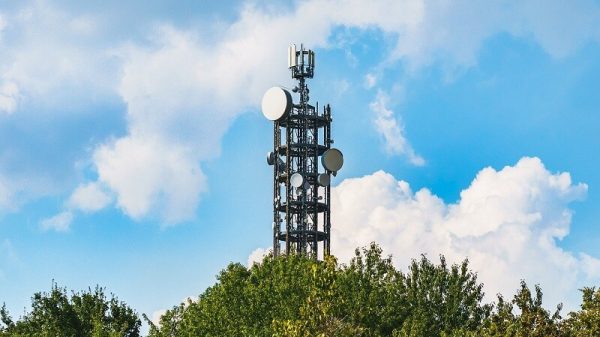Huawei on Wednesday launched a new range of smartphones, including its flagship Huawei Mate 40 series, which are all powered by the new HarmonyOS 2 operating system (OS). This is a significant change from Huawei’s previous phones, which were all powered by an open-source version of Android. The geopolitics surrounding the launch of the Harmony OS 2 operating system are worth looking into.
What set in motion the development of this new OS?
The development of HarmonyOS began as far back as 2016, but it gained momentum and importance after the US government imposed sanctions on Huawei in 2019. In May 2019, the US Department of Commerce added the Chinese smartphone maker and 70 affiliates to its “Entity List”, effectively prohibiting the company from importing, exporting or using American technology. In August 2020, another 38 other Huawei-affiliate companies were added to this “Entity List”.
After Huawei made it to the US government’s blacklist, Google cut ties with the company and cancelled its Android licence. This meant that Huawei was only allowed to use the public version of Android, known as the Android Open Source Project and not Google’s proprietary apps and services such as the Play Store, Gmail and YouTube, which are not covered by the open-source license and require a commercial agreement with Google.
In September 2020, Huawei revealed that it is preparing to switch from Android to HarmonyOS for its smartphones. Previously, HarmonyOS was only used for other smart devices like TVs and smartwatches.
Is HarmonyOS a true alternative to Android and iOS?
Although HarmonyOS is Huawei’s own, it is largely derived from Google’s Android open-source code that it is replacing. After having done a deep dive into the code of HarmonyOS, Ars Technica reported that it “is essentially an Android fork” and that there is “no discernible difference between Huawei’s all-new OS and Android.” But there is nothing illegal about this because Android code is open source and it isn’t subject to US export restrictions.
Huawei is not the first to try developing an alternative to iOS and Android. Alibaba made AliOS but the company long stopped updating it. Samsung created Tizen OS but these do not power its smartphones yet, and the watch version of Tizen is now consumed into Google’s WearOS. HarmonyOS might have a better chance than those that came before it because Huawei is one of the largest smartphone manufacturers and it will have the support of the all-powerful Chinese government which has been aggressively pushing for more adoption of local technology.
HarmonyOS, however, still poses many problems to Huawei. The OS still cannot run closed source Google software like PlayStore, Gmail, YouTube, Chrome, etc, or any other US-developed apps (except Microsoft apps which are exempted) because these are restricted by US sanctions. For these reasons, HarmonyOS is unlikely to be a worthy alternative to Android outside of China and is unlikely to seriously challenge the dominance of Android and iOS, which currently account for 85.4% and 14.6% of market share respectively.
“This whole effort seems to be nothing more than a branding exercise. Huawei can claim HarmonyOS as its own and say that it isn’t reliant on US software, and it can hope people will believe those claims. “Saving face” seems to be the only reason HarmonyOS exists, and that also explains why the company is so reluctant to be upfront about Harmony’s Android lineage.” – ArsTechnica
In order to be a true alternative to Android and iOS, Huawei not only needs to build an OS that is not largely dependent on Android code but, more importantly, it needs to build or facilitate the building of a whole new set of apps and services that are competitive with Google apps like Gmail, YouTube, PlayStore, as well as with apps other US-developed apps like Facebook, Twitter, Amazon, Netflix, etc.
Does HarmonyOS pose a threat to the security of Android?
When the US government imposed the sanctions, Google was worried that such a move risks compromising US national security. Google stated that the sanctions will prompt Huawei to develop its own version of the mobile OS, which could pose a bigger threat to Android in the coming years. Google argued that a version of Android developed by Huawei would be more vulnerable to hackers. The HarmonyOS 2 might just be that version of Android that Google feared.
What does this development mean for India?
As of now, the new OS has little impact on Indian consumers because Huawei does not hold a significant market share in the country. Other Chinese manufacturers like Xiaomi, Vivo and Oppo are leading in market share in India, and these manufacturers continue to use Google’s software because they do not feature in the sanction list. If these manufacturers decide to adopt HarmonyOS 2 going forward, which is highly unlikely, only then will it affect Indian users because access to Google apps and other US-developed apps will be cut off.
But there is a larger lesson here: Although there is no imminent risk for an Indian smartphone manufacturer to face such US sanctions, if any company did, it would be in the same boat as Huawei because India does not have any reliable alternative to Android or iOS, and is heavily reliant on US-developed apps, more so than China. Homegrown IndusOS made an attempt to challenge Android but did not make much headway. The platform was recently acquired by PhonePe and seems to have pivoted to helping the payment giant make a super app. In some spaces like fintech and food delivery, Indian apps are up there with the best, but there’s still a long way to go in other spaces, social media, for example.
Also Read
- Beijing Objects To Chinese Companies Being Excluded From 5G Trials In India
- Govt Finalizes List Of Allowed Vendors For Telecom Gear: Report
- Huawei Worked On A Facial Recognition Tool To Surveil Uighurs: Report
- UK Bans Installation Of New Huawei Equipment In 5G Networks From September 2021: Reports














